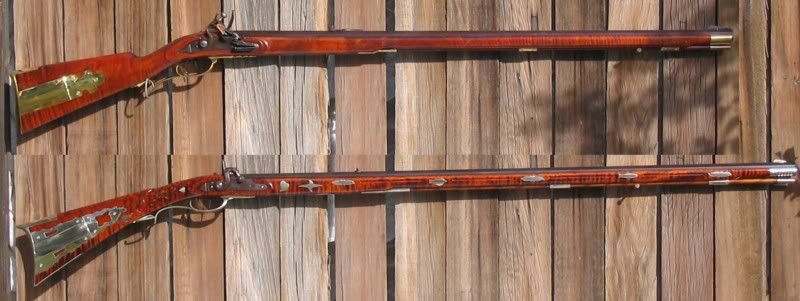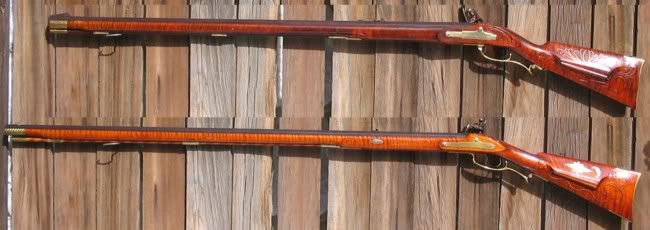Several of you have mentioned an interest in building one of Pecatonica Rivers "Transitional Kentucky" rifles.
I know most of you have seen these pictures, but I thought that if I merged them together, it would be of interest to you.
The top gun is my version of the Transitional (which is one of the styles common in the 1750s)

The lower gun is my version of a Franklin County style as might have been found in the 1830-1840 time frame.
For me, seeing them side by side gives me a better feel for some of their features. Both of these guns pictures are at the same scale as shown by the fence boards.
I know most of you have seen these pictures, but I thought that if I merged them together, it would be of interest to you.
The top gun is my version of the Transitional (which is one of the styles common in the 1750s)

The lower gun is my version of a Franklin County style as might have been found in the 1830-1840 time frame.
For me, seeing them side by side gives me a better feel for some of their features. Both of these guns pictures are at the same scale as shown by the fence boards.






